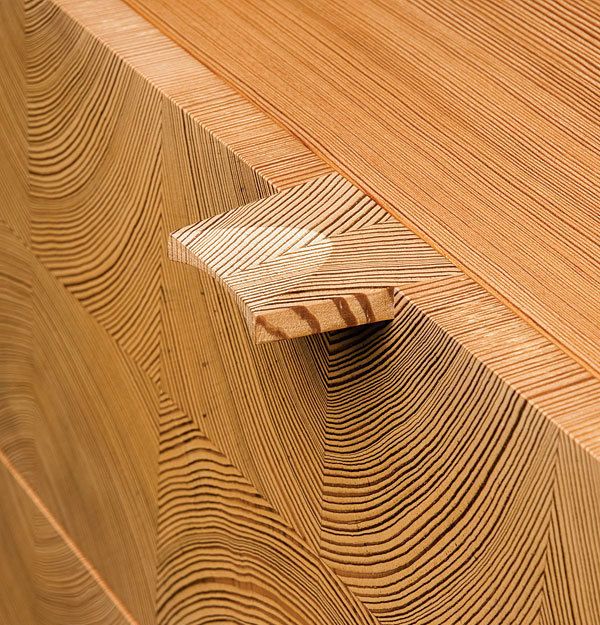
One of the main reasons the sideboard on the back cover is so eye-catching is its end-grain drawer fronts, made from tight-grained, old-growth pine. It is very uncommon to see furniture made with end grain as a primary surface. That isn’t because it lacks beauty. Its tight grain patterns and color are easily as attractive as the faces and edges of boards. But end grain presents an array of technical challenges, such as slicing and joining it to create panels, and controlling its movement. San Antonio furniture maker John O’Brien wasn’t daunted, however. He used a vacuum bag and clever jigs and clamping cauls to overcome every obstacle. And the centuries-old longleaf pine proved to be remarkably stable.
Dramatic drawer fronts
|
Four-square glue-up. After milling four perfectly square blanks, with the end-grain running diagonally on each, O’Brien simplifies the glue-up by using a vacuum bag and two L-shaped plywood platens to keep the pieces perfectly flush with each other. |
|
Smooth slices. He attaches a jig to his bandsaw’s miter-gauge to cut off 17/32-in.-thick slices. He inserts a mahogany spacer between the jig’s stop and the workpiece. After the workpiece is clamped, O’Brien removes the spacer so the cut piece can fall away from the blade. |
|
Ingenious jig. After gluing and biscuiting the slices, he puts them in a dead-flat clamping jig. Fences keep the pieces aligned and small wedges apply the pressure. The little plywood blocks between the wedges keep them from slipping as O’Brien taps them tight. Just to be sure the drawer front stays flat, he puts an MDF platen on top and pops everything back into the vacuum bag. The same glue-up jig holds the pieces perfectly for scraping and sanding. After applying a finish and cutting the notch for the drawer pulls, O’Brien drives screws through the inside of the drawer box to attach the front. |
Perfect pulls
|
One sander, two jigs. The pulls come from similar end-grain slices, four to a slice, each centered on one of the seams. O’Brien uses an angled sled guided by a piece of angle iron to plunge the stock lightly into a spindle sander (above). A jig on the opposite side of the spindle slides along the same metal guide to create the shallow curve on the front edge of the pull (below). |
Photos: Ansen Seale (top); Asa Christiana (all others)
Fine Woodworking Recommended Products

Circle Guide

AnchorSeal Log and Lumber End-Grain Sealer



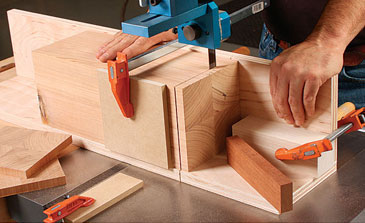
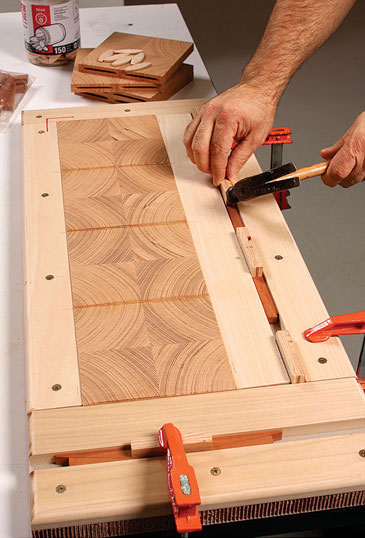
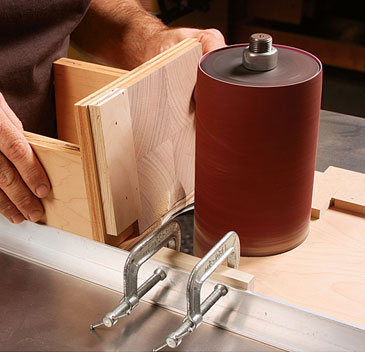
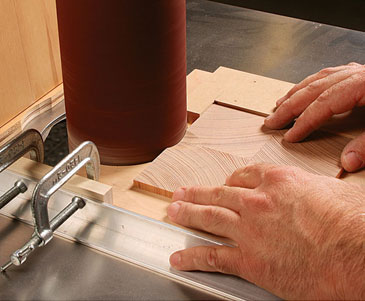





















Log in or create an account to post a comment.
Sign up Log in